London Planetree Grow & Care Guide
Written by Iris
Oct 11 2021
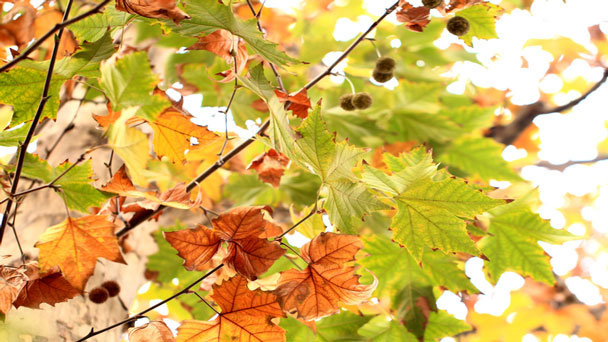
A popular, durable and attractive shade and street tree, London planetree (Platanus acerifolia hybrida) is very tolerant of adverse conditions and road salt. London planetree has interestingly shaped leaves and beautiful white and brown mottled bark; best in larger landscapes. London planetree (Platanus acerifolia hybrida) also has improved disease resistance over other varieties
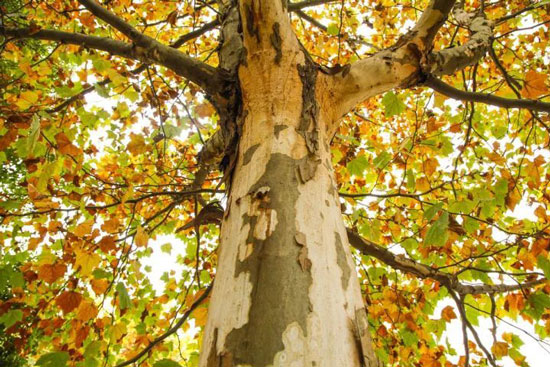
Older hardwood cuttings, including second year and older wood, can also usually be rooted easily. It is common for prunings used as beansticks to root in the open. Cuttings can also be taken with soft new season growth in summer. I have rooted cuttings taken in June and later, in close conditions under polythene covers, overwintered thereafter in sheltered conditions. A study has shown that the highest percentage takes are obtained from basal soft cuttings, taken in July, and rooted under mist.
Young trees do not normally suffer from problems with root girdling in containers, and even large plants in containers establish quite well given time. Bare-root plants also establish well.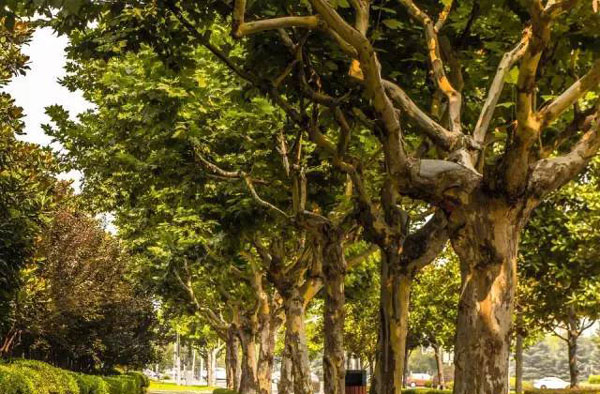
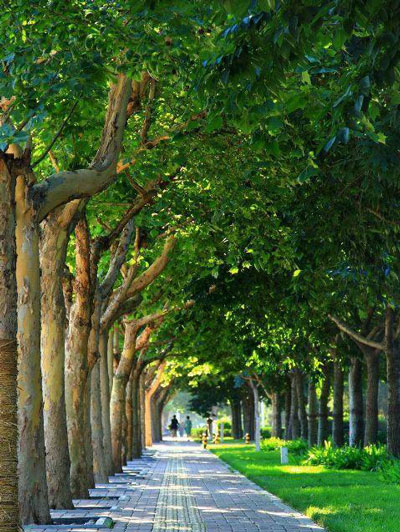
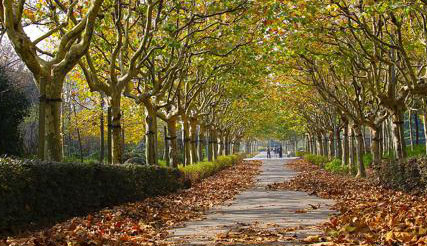
'Bloodgood' is one of the more popular varieties, growing around 60 feet tall and tolerating undesirable environmental conditions, including drought and poor soil.
'Columbia' sports dark green foliage and grows to roughly 50 feet. It resists mildew and anthracnose and can tolerate heavy pruning.
'Liberty' is a quick-growing variety with a pyramidal shape that reaches around 50 feet. It has a good tolerance for mildew, anthracnose, heat, and drought.
'Metzam' (or 'Metroshade') grows to a strong 70 feet. Another disease-resistant cultivar, its leaves emerge with a reddish cast but quickly become a lustrous green.
'Mirkovec' is a dwarf variety with a shrubby growth habit and unusual lobed leaves with pink, cream, and bronze coloring.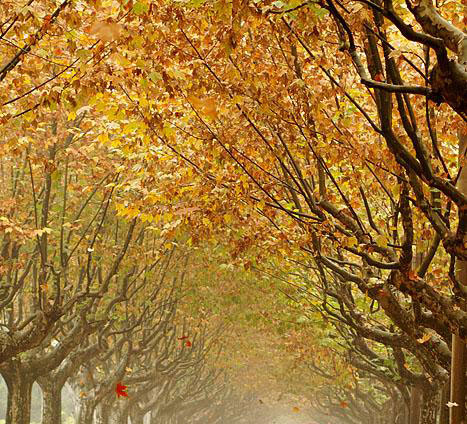
How to Grow London planetreeLondon planetree Propagation with SeedsLondon planetree Propagation with Stem CuttingsHow to Care for London PlanetreeLondon Planetree LightingLondon Planetree Soil CareLondon Planetree WateringLondon Planetree Temperature & Humidity CareLondon Planetree FertilizerLondon Planetree PruningLondon Planetree Pests & Diseases CareLondon Planetree VarietiesLondon Planetree Care FAQAre London Plane trees messy?Do London Plane trees grow quickly?What is the lifespan of a London plane tree?
How to Grow London planetree
London planetree Propagation with Seeds
London planetrees (Platanus acerifolia hybrida) are usually raised from seed. The seed should be collected from the tree in autumn as it matures, though collection can go on through the winter. It needs no pretreatment other than being kept cool and dry. It should be sown shallowly in the open in spring. While the hybrid planes produce fruits profusely, the percentage of viable seed produced in England is low. Raising the hybrids from seed may theoretically result in the loss of some hybrid vigour. While seed could be raised from the oriental plane, and it produces more good seed than the London plane, it is known that the percentage of good viable seed set in Britain is lower than in warmer climates.
London planetree Propagation with Stem Cuttings
London planetrees (Platanus acerifolia hybrida) are generally grown from cuttings. Traditionally hardwood cuttings have been used as the tree is easy to raise by this method and the stock responds well to the annual removal of the cuttings. It is possible that varieties that are easiest to propagate by this method have been selected for. Standard methods include 1) the insertion of hardwood cuttings of well matured tissue about 25cm long in open ground at or after leaf fall, rooting taking place by the spring, 2) the insertion of similar hardwood cuttings in March in frames with bottom heat, rooting taking place within 3 to 4 weeks.Older hardwood cuttings, including second year and older wood, can also usually be rooted easily. It is common for prunings used as beansticks to root in the open. Cuttings can also be taken with soft new season growth in summer. I have rooted cuttings taken in June and later, in close conditions under polythene covers, overwintered thereafter in sheltered conditions. A study has shown that the highest percentage takes are obtained from basal soft cuttings, taken in July, and rooted under mist.
Young trees do not normally suffer from problems with root girdling in containers, and even large plants in containers establish quite well given time. Bare-root plants also establish well.

How to Care for London Planetree
London Planetree Lighting
Full sun and partial shade are best for this tree, meaning it prefers a minimum of four hours of direct, unfiltered sunlight each day.London Planetree Soil Care
Although it can adapt to most growing conditions, the London planetree does best in rich, deep, well-draining soil. It grows in loamy, sandy, and clay soil types. And it can handle acidic and alkaline pH levels, as well as some soil compaction.London Planetree Watering
After back filling and lightly compacting the 50/50 mix of existing soil and compost give the London Planetrees a good deep watering. This is not to be rushed. Most of the water you put on the plant at first will run away from the plant until the soil is soaked. A general rule of thumb is to count to 5 for every one gallon of pot size. For example a one gallon pot would be watered until you count to 5 a three gallon pot would be 15 and so on. Check the plant daily for the first week or so and then every other day there after. Water using the counting method for the first few weeks. Gator Bags can be used to help aid in this process and also provide plants with a good soaking due to the slow release of the water into the root-zone of the plant. Soaker Hoses can also be used to water when planting a long row of London Planetrees.London Planetree Temperature & Humidity Care
London planetrees grow rampantly in moderate climate regions around the world. The tree can be amenable to a particularly hot summer, as long as its soil remains moist. And it can withstand a harsh winter, though it might sustain some cold injuries.London Planetree Fertilizer
Because London planetrees (Platanus acerifolia hybrida) are often grown in areas with poor soil or limited space, they can end up lacking in nutrients. If this is the case, follow the label instructions to feed the trees with tree fertilizer in early spring and fall. However, if the tree is planted in a fertile area with room to spread, it may not need much fertilizer. Test soil samples to be sure.
London Planetree Pruning
London Planetrees that have not been pruned in a few years will often develop dead or degenerative twigs. Removing the dead and dying limbs will minimize the possibility of diseases such as “dieback” and will also allow the plant to re-concentrate its energies and produce flowers. It is important to always use sharp tools when pruning London Planetrees or any plant for that matter. Knives, hand cutters, saws, and shears should be sharpened if necessary before pruning any plant. A sharp cut will heal quicker than a jagged cut, which will also minimize the likelihood of disease investing a cut during pruning. It is generally recommended to not use power equipment such as gas hedgers to prune trees. Pruning large London Planetrees may be minor or major. Its general purpose is to maintain or restore vigor to the plant. Large London Planetree that have been severely pruned have the advantage of a large root system with excessive capacity. Its roots are capable of supplying all of its energies to a smaller number of branches and foliage. This enables the plant to increase its vigor, and become healthier. Pruning large London Planetree that are well established will enable the plant to have continued vigor, and lead to many more years of supplying beauty to the landscape. Remember once your London Planetree is becoming large and mature it may be best to let a professional arborist do the pruning.London Planetree Pests & Diseases Care
London planetree was originally thought to be much more resistant to sycamore anthracnose than its American parent, however this is no longer entirely clear since anthracnose resistance seems to vary considerably among various hybrid plants. Some reportedly resistant cultivars, such as ‘Columbia’ and ‘Liberty’, are available. Another disease problem of concern is cankerstain which can be fatal. Canker, leaf spot and powdery mildew may also occur. Insect visitors include borers, scale, Japanese beetles, caterpillars and mites. When grown as a lawn tree, litter from twigs, large leaves, bark and fruiting balls can pose significant clean-up problems.
London Planetree Varieties
The hybridization of the london planetree is thought to have occurred accidentally sometime during the 17th century in either Spain or London when the American sycamore and Oriental planetree were planted close to one another. Since then, several cultivars have been developed.'Bloodgood' is one of the more popular varieties, growing around 60 feet tall and tolerating undesirable environmental conditions, including drought and poor soil.
'Columbia' sports dark green foliage and grows to roughly 50 feet. It resists mildew and anthracnose and can tolerate heavy pruning.
'Liberty' is a quick-growing variety with a pyramidal shape that reaches around 50 feet. It has a good tolerance for mildew, anthracnose, heat, and drought.
'Metzam' (or 'Metroshade') grows to a strong 70 feet. Another disease-resistant cultivar, its leaves emerge with a reddish cast but quickly become a lustrous green.
'Mirkovec' is a dwarf variety with a shrubby growth habit and unusual lobed leaves with pink, cream, and bronze coloring.

London Planetree Care FAQ
Are London Plane trees messy?
London plane trees tend to be a somewhat messy, seemingly dropping something every day of the year. In fall, when other deciduous trees are dropping their leaves, the London plane leaves die, but persist on the branches throughout the entire winter. ... Sycamore trees have very interesting and attractive, mottled bark.Do London Plane trees grow quickly?
A fast-growing tree, the London plane typically gains several feet in height per year. It transplants well and can be planted throughout the year. Like all sycamores, the London plane has bark that peels away in irregular patches to show creamy whitish-green inner bark.What is the lifespan of a London plane tree?
The London plane can grow to 35m and live for several hundred years. The bark is olive green to grey, with large scaly plates that peel off to reveal a creamy bark beneath.Latest Updated
- Benefits of Bugleweed - 7 Science-backed Health Benefits
- Bugleweed Dangers & Side Effects - Is It Poisonous?
- How to Plant Evergreen Trees - What You Should Know
- When to Plant Evergreens - Grow Guide for Evergreen Trees
- 12 Wonderful Evergreen Shrubs for Your Garden
- 12 Popular Evergreen Plants with Pictures for Beginners
- When And How To Prune A Lilac Bush Like a Pro
- How to Grow & Care for Lilac Vine (Hardenbergia Violacea)
- Japanese Lilac Tree (Syringa Reticulata) Care & Propagation Guide
- Shumard Oak Pros and Cons - What to Know
Popular Articles
- Winter maintenance of Antirrhinum Majus
- How to Grow Terminalia Mantaly Tree
- How to Grow and Care for Crossostephium Chinense
- How to grow Antirrhinum Majus in spring
- Peristeria Elata (Dove Orchid) Profile: Info & Care Guide
- Underwatered Snake Plant (Sansevieria Trifasciata) - Signs And How To Fix
- How to Care for Brazilian Jasmine Plant (Mandevilla Sanderi)
- How to Grow & Care for Graptopetalum Purple Delight in Summer
- Rosa Chinensis (China Rose): Plant Growing & Care Tips
- How to Care for Baby Sun Rose (Aptenia Cordifolia)